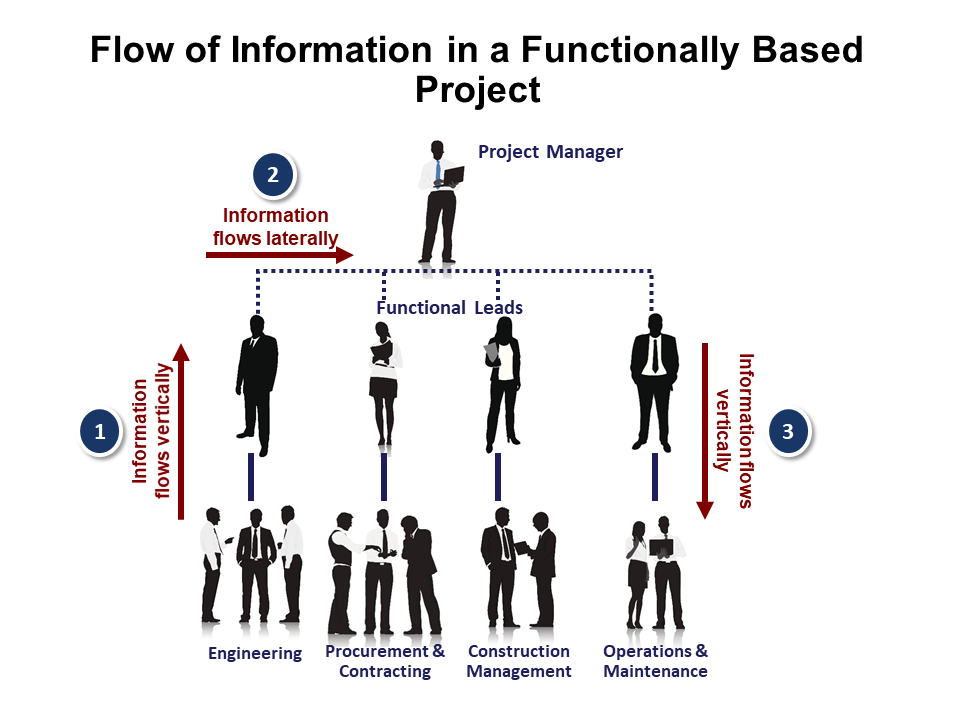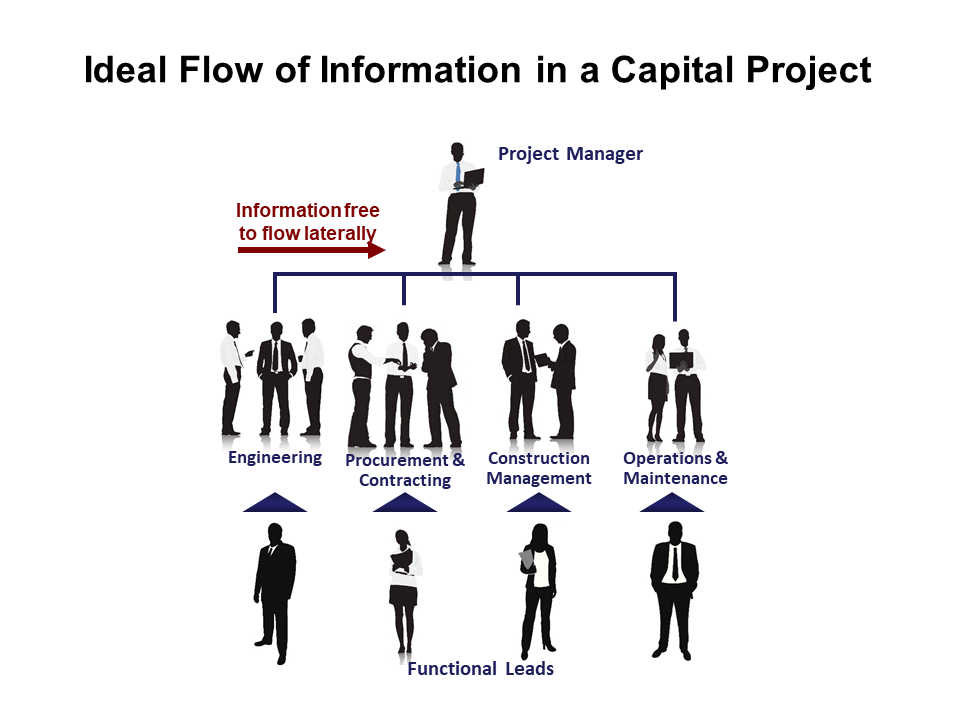Improving the Effectiveness of Capital Project Organizations
IPA has observed that few companies have project organizations that consistently support project excellence. In fact, many companies seem to be constantly reorganizing in search of better performance. Why do so many companies struggle with creating project organizations that can really improve capital project effectiveness? Also, what can companies do to create an effective project organization that does not need to be reorganized every few years?
Why Business Organizations Struggle With Supporting Projects
Organizing to support capital projects is challenging because the typical business organizations that most are familiar with, and often attempt to emulate, are not capable of effectively performing the core roles required by a project organization. To better understand why, we need to first consider a typical business organization. Many businesses are organized as a hierarchical pyramid. In the lower hierarchical tiers, companies are typically organized into specialized functions. Examples of these specialized functions include marketing, contracting, legal, human resources, and operations. These are important business functions, but the work performed by such groups can often be performed independent of the others. Such functionally based organizations are often good at executing repeatable tasks that require consistency in application. Work is performed independently within departments and then aggregated as needed.
In stark contrast, the nature of capital project organizations renders functionally based organizations ineffective for two key reasons:
- Capital projects require extensive collaboration across functions within the owner company and with external organizations (e.g., contractors)
- No two projects are exactly alike, meaning project work does not lend itself to the repeatable, consistent tasks that functionally based groups are designed for
Consequently, to optimize the capital project organization, a primary focus must be how to drive effective communication and information flow within project teams.
In traditional business organizations, cross-functional (or lateral) communication involves long top down or vertical channels. This is not something that must occur frequently, so this may be acceptable in the business world. However, in the world of capital projects, similar communication channels are not effective because, as demonstrated below, the process is slow and information often gets conveyed incorrectly. What is more, accountability for a project is obscured. For example, consider the following scenario:
A project is organized by function, as shown in Figure 1. The engineering group has identified an error in the drawings that requires a significant change to the piping design. This information must be communicated to estimating and procurement as more pipe of different specification is required. Rather than communicating this information directly, because the project is organized by function, the technical information must flow vertically up through layers of management and laterally to other management before making its way down vertically to the intended recipient. Clearly, this process is slow and risks transmitting misinformation due to lack and shared world-view of the management layers conveying the information. The process is akin to the game of telephone.

Given the technical complexities that exist within capital projects, a structure that encourages lateral flow of information is much more effective, like that shown in Figure 2. Vital project knowledge is more easily shared
and understood.

Five Steps for Planning the Right Project Organization Structure
Unfortunately, no single structure can be effective for every project organization. A project organization’s optimal structure should be tailored to company-specific characteristics and to support the company’s strategic objectives. Although there is no universal way to structure a project organization, companies should consider certain elements of design to foster the aforementioned collaboration and information flow required on projects and to promote accountability. For example, should your project organization be centralized, distributed throughout business units, or is there a better solution in between?
Fully centralized project organizations, for example, deliver improved capital project performance. Such organizations offer the strongest and clearest means of project accountability. However, a fully centralized structure is not likely best suited for organizations with very small project portfolios with projects involving work performed at several disparate global sites. The cost of maintaining such a model may be much higher than the gains.
So how do you identify the right structure for your organization? Here are some basic steps for determining what is right for your organization:
- Define the goal of the organization or what you are trying to achieve. Gather stakeholder input and use corporate directives to identify the organization’s core objectives. By the end of this step, you should be able to clearly answer the question: What does the organization exist to do?
- Identify the key factors that will drive decisions. Evaluate the corporate culture and structure and use that as a foundation to identify the parameters/boundaries for decision making. Also, identify key elements that will drive decisions such as strength and size of business units, size, stability, and portfolio diversity.
- Define the alternatives. Identify the various structural approach options and evaluate each against the pre-defined goals and decision factors. Weigh the pros and cons of each alternative to determine how likely each is to achieve the objectives while working within the parameters and key drivers.
- Choose a structural approach. Select the approach that strikes the best balance across the objectives and drivers but is also aligned with the needs of the current and future project portfolio.
- Outline a change management plan. Consider the current state of the company and organization against what is needed to implement the chosen approach. Account for matters such as resourcing, capability, and processes.
Creating the ideal project organization is hard work. When a new structure is not giving us the results we were hoping for immediately, companies are quick to reorganize and try something new. As anyone who has gone through multiple reorganizations knows, the process is very disruptive—to the people in the organization and also to progress and improvement. To avoid this disruptive cycle, companies need to be clear about what their goals are for improving capital project effectiveness, and then they can follow a process for establishing an effective project organization.
Complete the form below to request more information on how IPA can help your company establish project organizations and teams that drive capital effectiveness.
Article co-written by IPA’s Sarah Sparks, Lucas Milrod, and Justyna Kaczmarczyk